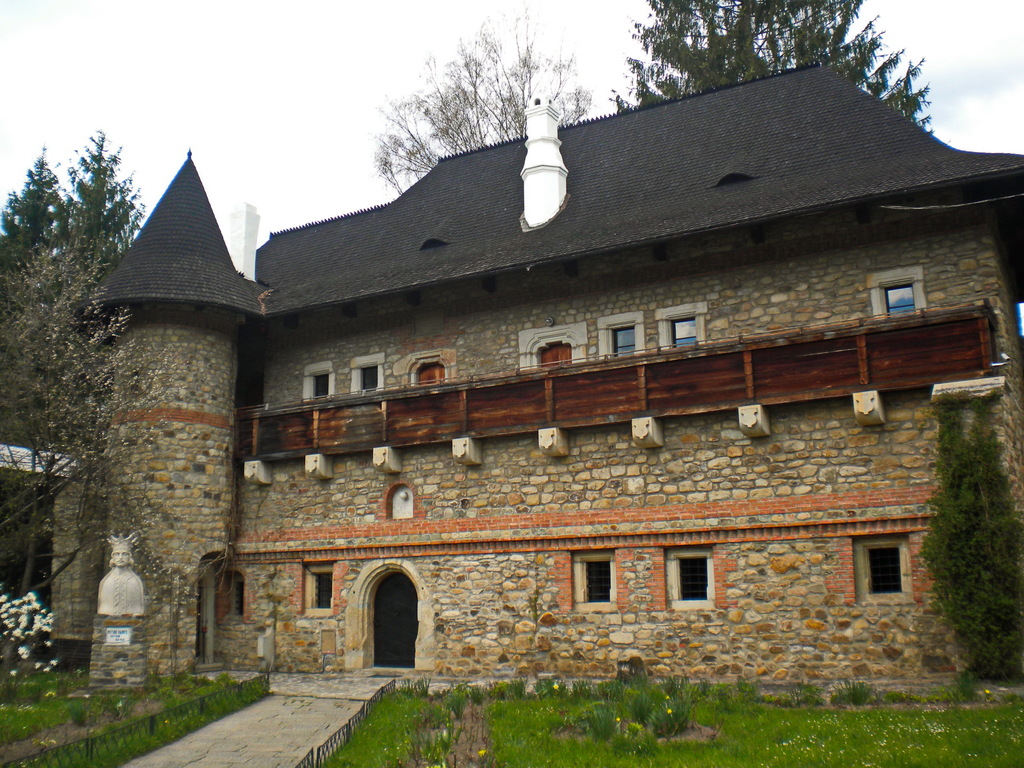There aren’t many countries in the world lucky enough to have such a high density of historic and cultural sites, beautiful landscapes and spiritual legacy as Romania. The northern part of the country is called Bucovina and it translates as “the land of beech trees”. The impressive number of monasteries in Bucovina, with their interesting interior and exterior frescoes, has been preserved since medieval times.
Given their unique artistic value, the painted monasteries from this part of Romania are considered a UNESCO World Heritage Site. You may wonder why the monasteries were painted. The frescoes were created in a time when that area was under constant attack from the Ottoman Turks, so the locals painted the frescoes as a way of communicating biblical and historical stories to their illiterate troops and keep them engaged and informed about the realities of the time.
Read on to discover six of the painted monasteries in Bucovina, Romania.
1. Humor Monastery

A good start for a roadtrip in Bucovina is Gura Humorului, a town located 5 km / 3 miles from the village Manastirea Humorului, where Humor Monastery is located.
The Humor Monastery was established in 1530 on the foundation of a previous church that was built around 1415. The ruins of the initial structure still exist today about 300 m / 985 ft from today’s monastery. As you enter the gate of the monastery, on the right you’ll see a defense tower built in 1641. From here, you can enjoy a nice higher view of the area. The frescoes on the external walls of the monastery are the best preserved, compared to the rest of the murals.
2. Voronet Monastery

Often referred to as the “Sistine Chapel of the East”, Voronet Monastery is perhaps the best preserved of the painted monasteries. It was built in 1488 and it has become popular for its “Voronet blue”, a strong paint pigment made using lapis lazuli (a dark blue semi-precious stone). Voronet Monastery is located in Voronet village, near the town of Gura Humorului, Suceava County.
3. Dragomirna Monastery

Dragomirna is a fortified church that was built in 1609 and located 12 km / 8 miles from Suceava City. This is a very impressive structure, unique in the country for its unusual ship-like shape (it’s 42 m / 138 ft tall and very narrow). The tower is entirely decorated with Caucasian floral and geometric patterns.
4. Sucevita Monastery

Sucevita Monastery was established around 1581 and it’s a great combination of Byzantine and Gothic art with architectural details of the old wooden churches of Moldavia, the historical region south of Bucovina. The external fresco has great artistic value, displaying complex Bible scenes, and the original bells from 1605 are still functional today.
Sucevita Monastery is located in Sucevita village, 18 km / 11 miles from Radauti City, Suceava County.
5. Moldovita Monastery

Built in 1532, Moldovita Monastery also has some very-well preserved external frescoes. One of the most valuable ones is the “Siege of Constantinople”, a vibrant display of canons and Turkish horsemen rushing toward the monastery.
Moldovita Monastery is located in Vatra Moldovitei Village, 30 km / 19 miles from the town of Gura Humorului, Suceava County.
6. Putna Monastery

Putna Monastery is arguably the most famous of the monasteries in Bucovina. Located about 30 km / 19 miles northwest from Radauti City and close to the Putna River, the legendary monastery is surrounded by high, forested hills and a beautiful landscape. Built by Stephen the Great in 1469, Putna has become a place of pilgrimage as his tomb is found inside the church.
Stephen the Great ruled for 47 years and protected the country against the Ottoman, Polish and Hungarian attacks and built monasteries that today are culturally important. Because he maintained a secure area, many international merchants chose to come through Moldavia on their way from the Black Sea to the city of Lviv, in today’s Ukraine. As a result, Moldavia flourished considerably, hence the resources to build so many great monuments. In fact, Putna Monastery was Stephen’s first and most important edifice.
Don’t miss Bucovina on your next trip to Romania
The amazing execution of the frescos and the chromatic harmony perfectly match the wild and beautiful scenery. Regarded as masterpieces of Byzantine art, the painted monasteries in Bucovina are unique throughout Europe and are definitely worth a visit if you’re traveling to Romania.
Opening hours are 8 am-7 pm and the entrance fee is 5 RON (1.1 EUR / 1.3 USD). Photography is not allowed inside, but you can buy a brochure with beautiful images from the monastery shops.
Regardless of your faith, these sites are delightful and you won’t find similar painted monasteries elsewhere in Europe.
History
Get Trip101 in your inbox
Unsubscribe in one click. See our Privacy Policy for more information on how we use your data















Create an account to